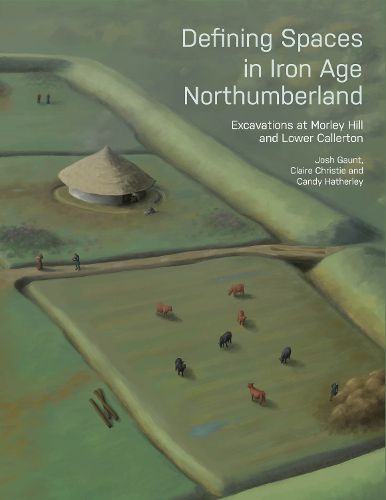Readings Newsletter
Become a Readings Member to make your shopping experience even easier.
Sign in or sign up for free!
You’re not far away from qualifying for FREE standard shipping within Australia
You’ve qualified for FREE standard shipping within Australia
The cart is loading…






The Iron Age settlements excavated by Headland Archaeology (UK) Ltd at Morley Hill and Lower Callerton lie within the rich later prehistoric landscape of the Northumberland coastal plain. This monograph presents the results of the excavation, specialist analyses and provides a key dataset upon which to discuss regionally and nationally important later prehistoric research themes. The excavations at Morley Hill and Lower Callerton offer two large-scale new datasets to compare within the corpus of enclosed Iron Age settlement sites across the region, allowing for an increased understanding of settlement patterns, architectural forms and farming practices. These include settlement development, longevity and tempo; the relationship between lowland and upland sites; settlement organisation and identity; roundhouse architecture and the impact of contact with the Roman world.
At Morley Hill, work revealed two later Iron Age settlements defined by rectilinear enclosures surrounding groups of roundhouses with evidence for earlier phases of activity. The settlements at Morley Hill are comparable to many such distinctive settlements identified across the region and explored in recent years largely through developer-funded excavations. Lower Callerton represents a less explored form of extensive settlement with the excavation revealing evidence of earlier prehistoric activity overlain by a large Iron Age enclosure with over 53 structures, multiple sub-enclosures and boundaries. Comprehensive Bayesian modelling at Lower Callerton has provided a robust chronological framework indicating complex and continual settlement development from the middle Iron Age. The implications of this in terms of wider settlement development, tempo and longevity are explored. While the monograph focuses on the Iron Age, the identification and influence of earlier prehistoric activity is also explored. The discussion is again enhanced by the programme of radiocarbon dating and isotopic analysis of cereal grains from Neolithic pits at Lower Callerton.
$9.00 standard shipping within Australia
FREE standard shipping within Australia for orders over $100.00
Express & International shipping calculated at checkout
The Iron Age settlements excavated by Headland Archaeology (UK) Ltd at Morley Hill and Lower Callerton lie within the rich later prehistoric landscape of the Northumberland coastal plain. This monograph presents the results of the excavation, specialist analyses and provides a key dataset upon which to discuss regionally and nationally important later prehistoric research themes. The excavations at Morley Hill and Lower Callerton offer two large-scale new datasets to compare within the corpus of enclosed Iron Age settlement sites across the region, allowing for an increased understanding of settlement patterns, architectural forms and farming practices. These include settlement development, longevity and tempo; the relationship between lowland and upland sites; settlement organisation and identity; roundhouse architecture and the impact of contact with the Roman world.
At Morley Hill, work revealed two later Iron Age settlements defined by rectilinear enclosures surrounding groups of roundhouses with evidence for earlier phases of activity. The settlements at Morley Hill are comparable to many such distinctive settlements identified across the region and explored in recent years largely through developer-funded excavations. Lower Callerton represents a less explored form of extensive settlement with the excavation revealing evidence of earlier prehistoric activity overlain by a large Iron Age enclosure with over 53 structures, multiple sub-enclosures and boundaries. Comprehensive Bayesian modelling at Lower Callerton has provided a robust chronological framework indicating complex and continual settlement development from the middle Iron Age. The implications of this in terms of wider settlement development, tempo and longevity are explored. While the monograph focuses on the Iron Age, the identification and influence of earlier prehistoric activity is also explored. The discussion is again enhanced by the programme of radiocarbon dating and isotopic analysis of cereal grains from Neolithic pits at Lower Callerton.